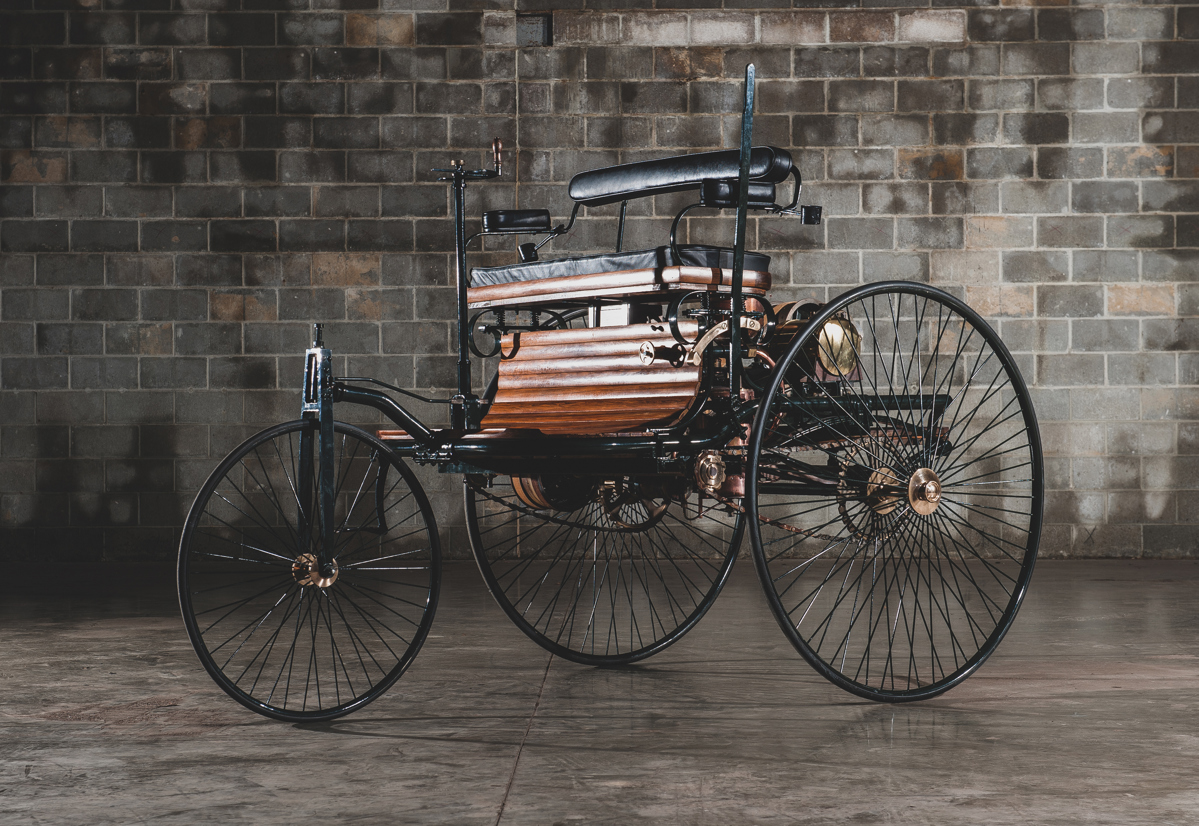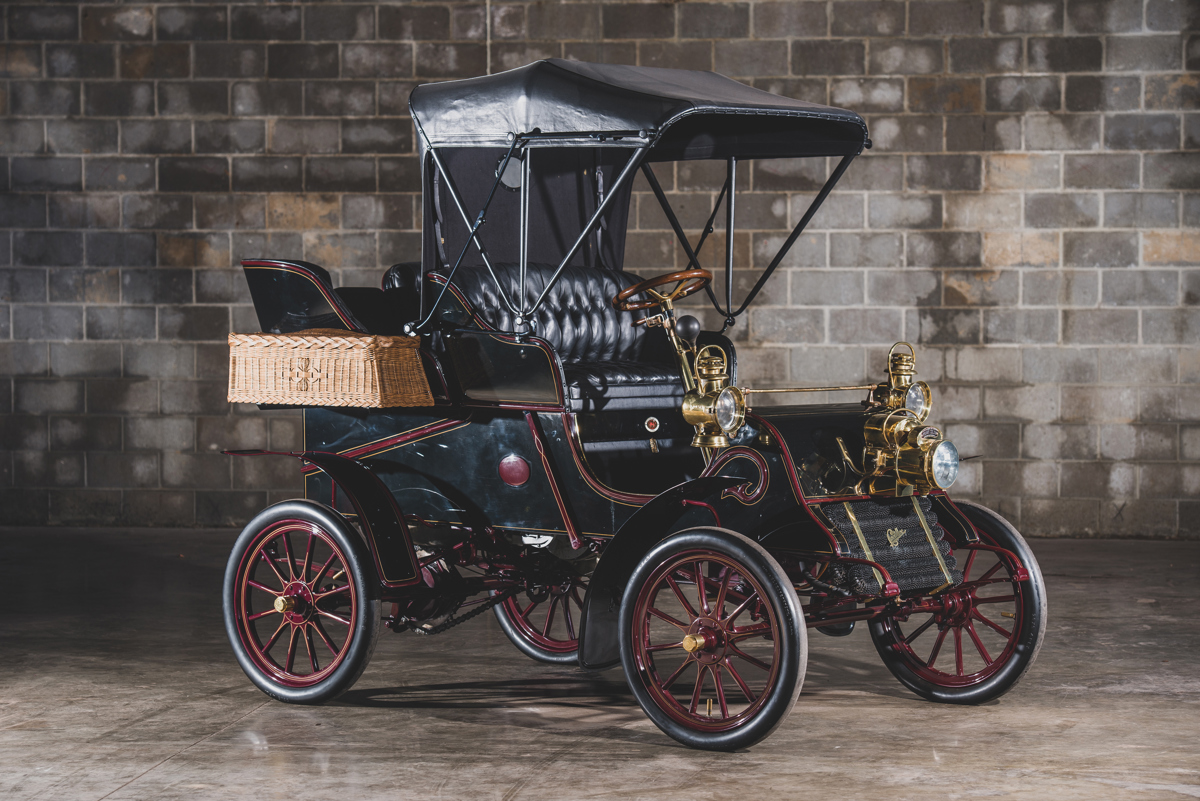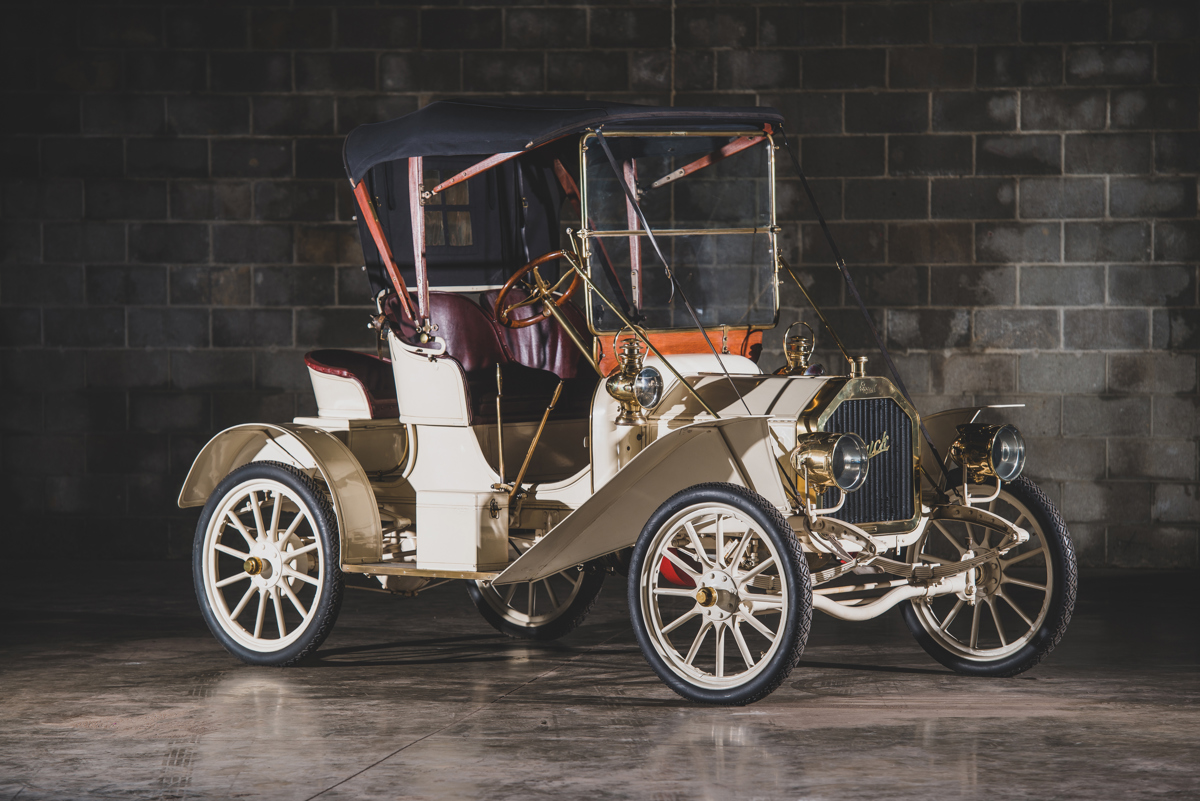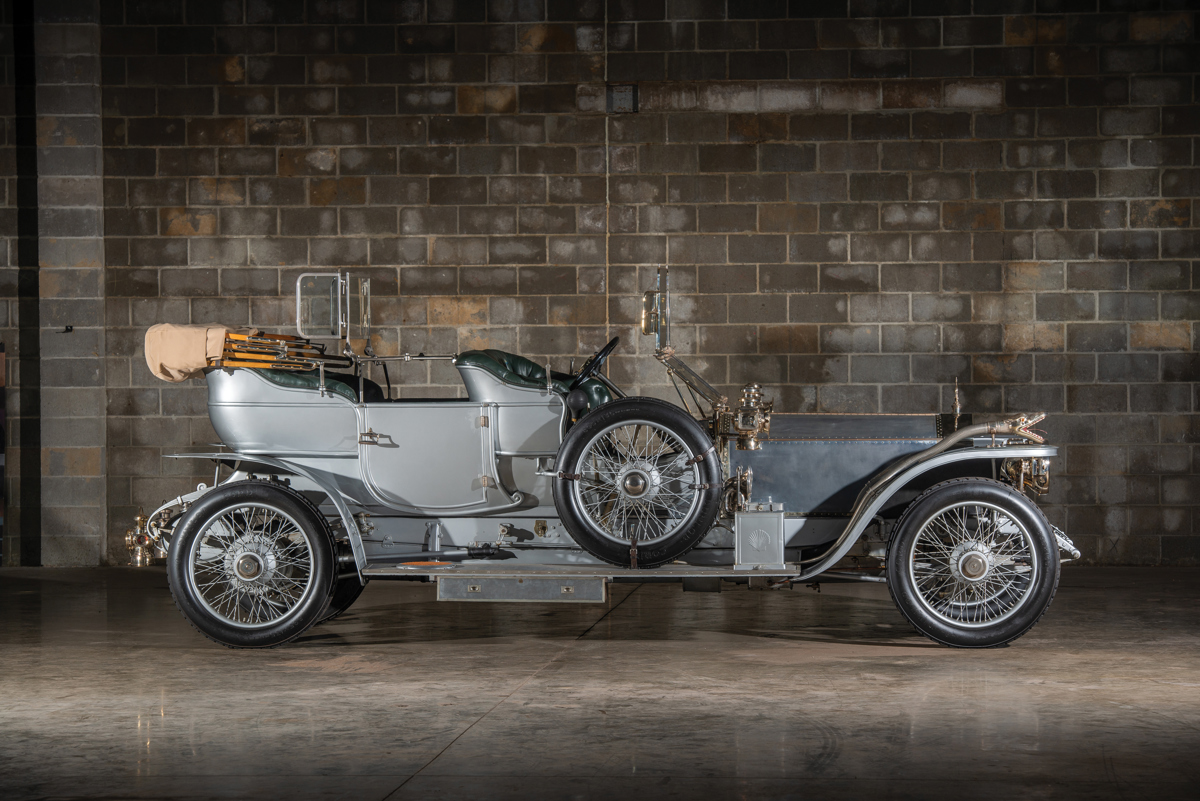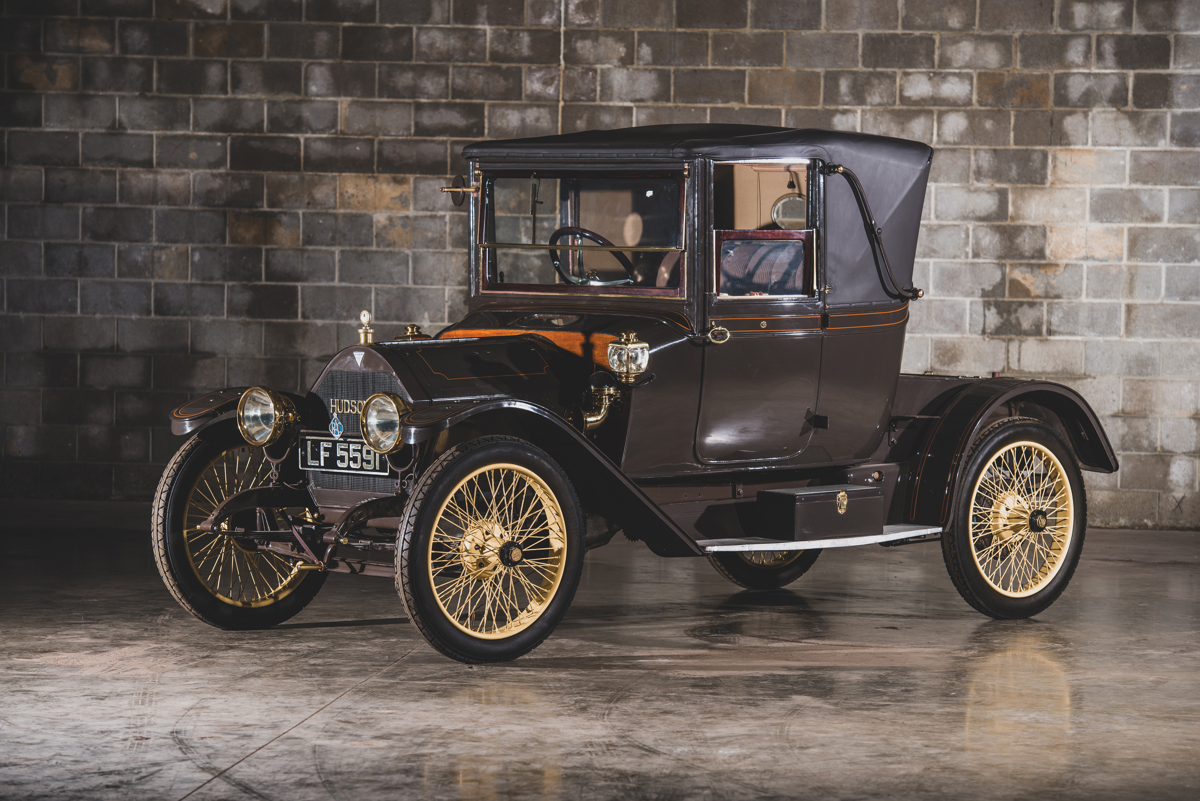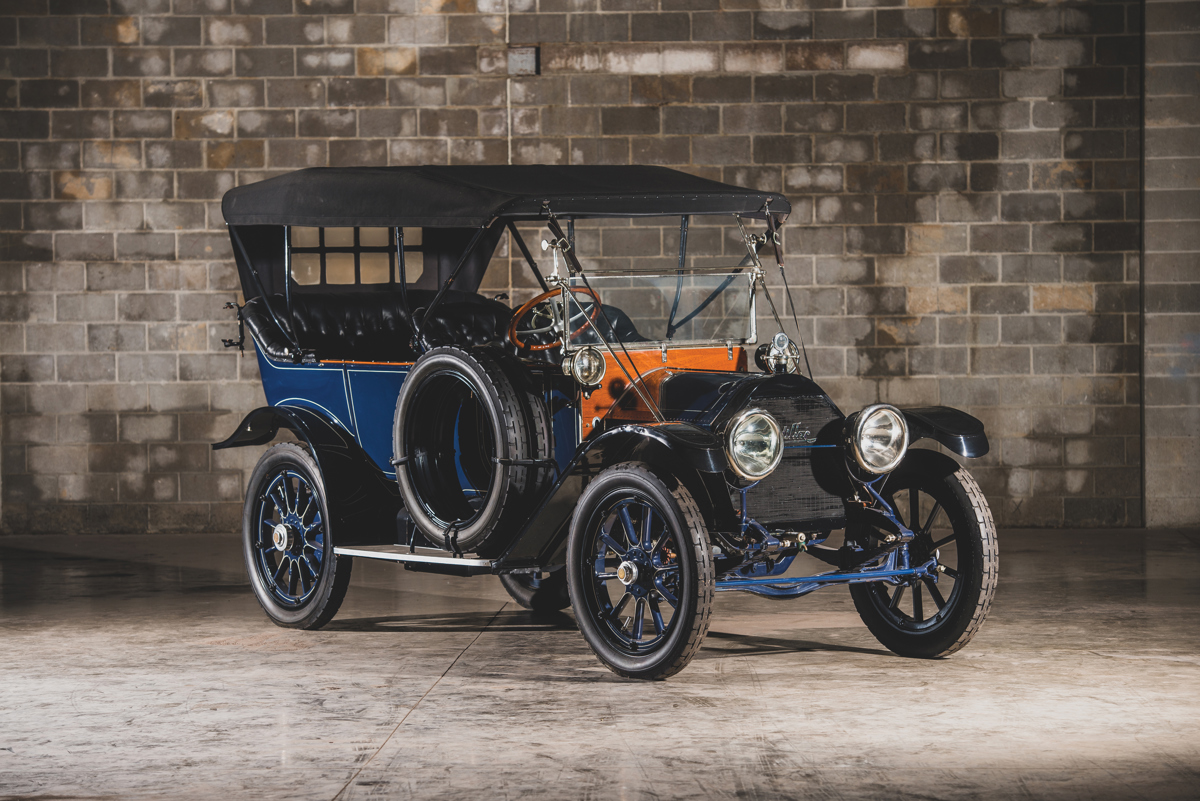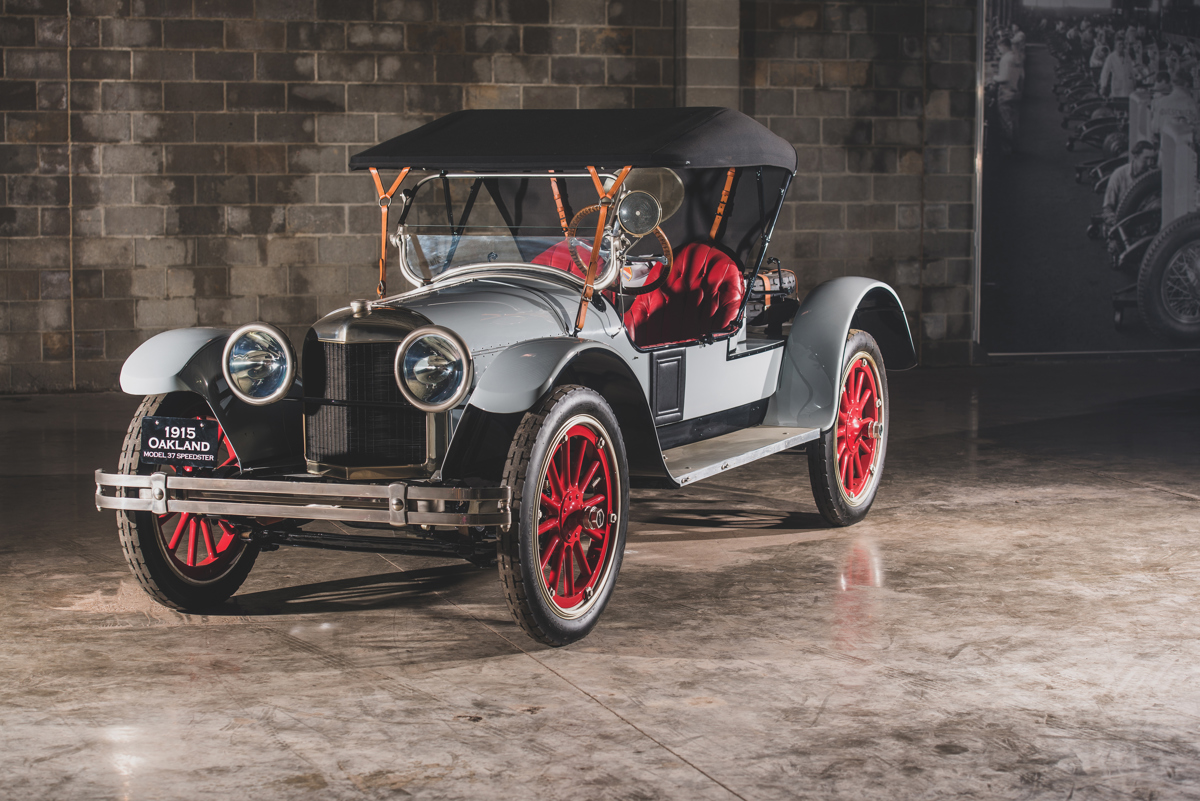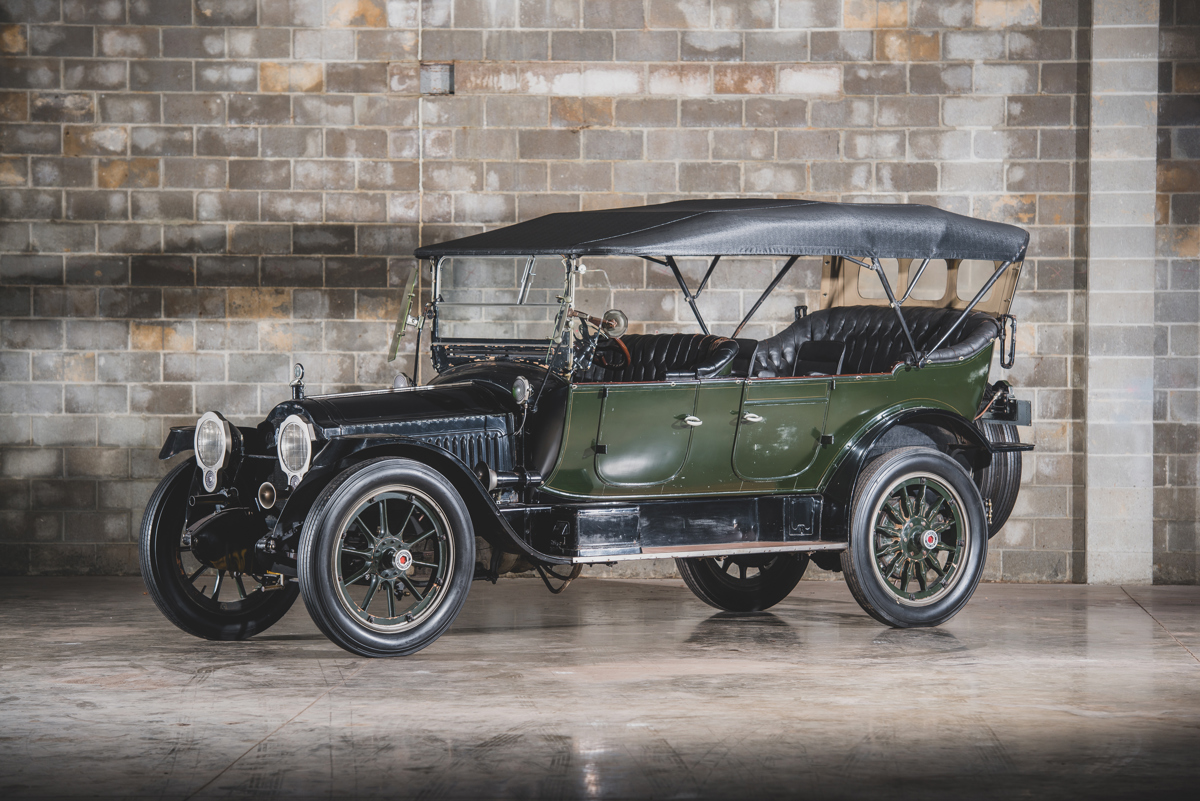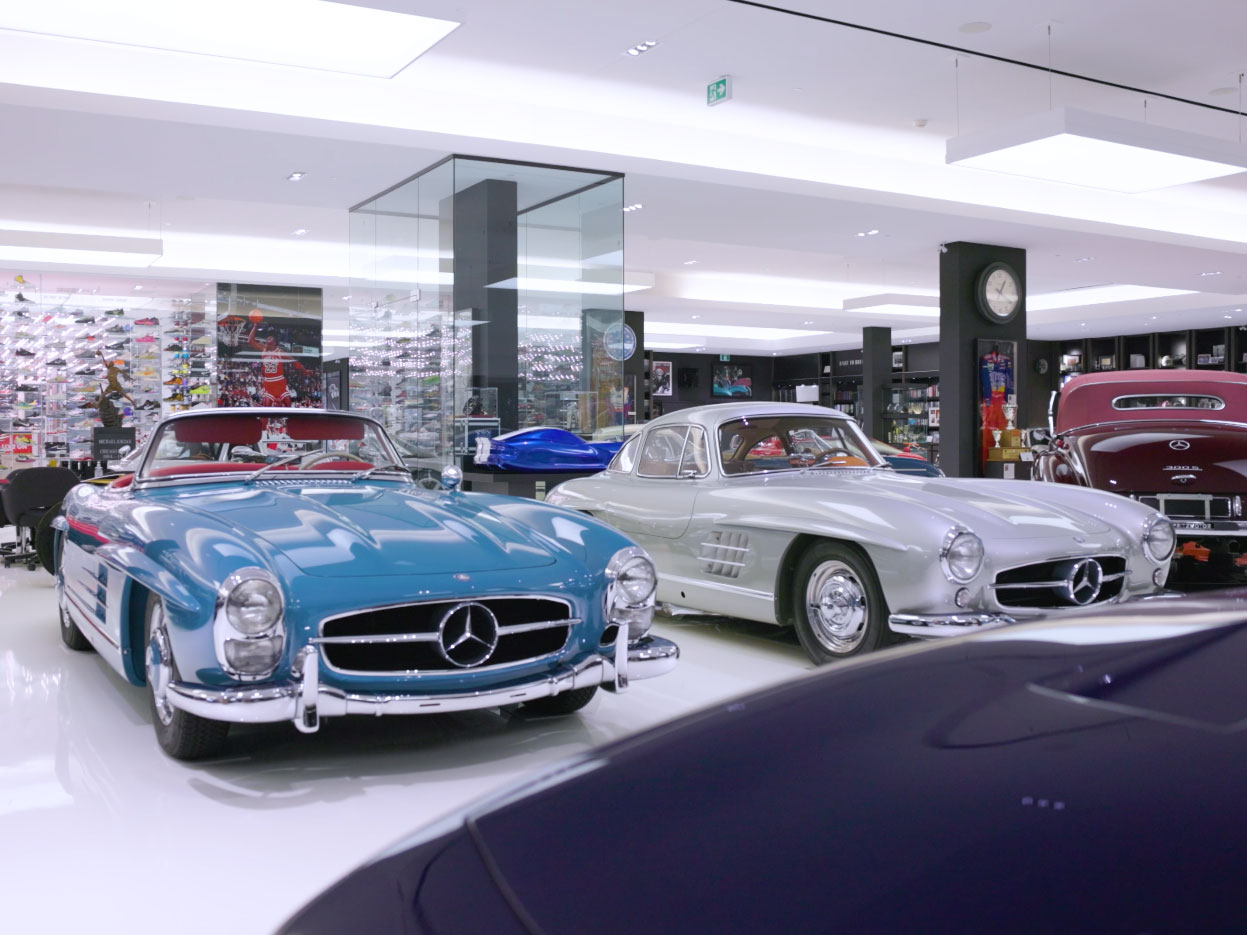In the late 19th century, the quest to revolutionize transportation gained momentum in both Europe and America as inventors created ingenious new solutions to power a horseless carriage. The Edwardian era encompasses the years between 1896-1904, referencing the reign of King Edward VII of Great Britain, while the Brass era is the American term coined for the manufacturing period between 1905-1915.
Across the 20-year span, the period saw development of inventive propulsion systems and experimental body designs which would rapidly evolve and eventually shape the present-day automobile. The era is characterized by the widespread use of brass in the vehicle’s fixtures—from light fixtures, radiators, door handles, and frames all constructed of brass. French manufacturer Panhard et Levassor’s Système Panhard specified an internal combustion front engine, rear-wheel-drive layout with a sliding gear transmission—a layout which would become widely adopted and standardized by other manufacturers. The high-wheel motor buggy design which resembled horse drawn carriages prior to 1900 was gradually abandoned, replaced by runabouts, tonneaus, and touring body styles. Advancement of technology was rapid throughout the period—from the development of the electric ignition system to independent suspension and four-wheel brakes, manufacturers fought for the attention of the world.
Scroll down for 8 examples of motor cars from the Edwardian and Brass Eras, expertly curated by the late Mr. Fred Guyton.
1886 Benz Patent Motorwagen Replica
Estimate: $40,000 - $50,000 USD | Offered Without Reserve
Widely known as the world’s first automobile, the Benz Patent Motorwagen is powered by a four stroke, single-cylinder gasoline engine mounted behind the driver with a simple belt drive system acting as a single-speed transmission to the chain-driven rear wheels. Offered here is an exacting replica, produced by John Bentley Engineering in the UK, a firm credited with creating the most faithful replications of the automobile.
1903 Cadillac Rear-Entrance Tonneau
Estimate: $100,000 - $125,000 | Offered Without Reserve
The early production Cadillacs of 1903 were offered in a runabout body style—a simple open design with a single row of seats—with or without an optional rear-mounted tonneau row to seat two additional passengers. Powered by a 98cc single-cylinder engine capable of producing up to 10-hp, the Model A Cadillac performed well in hard driving events worldwide.
1908 Buick Model 10 Runabout
Estimate: $35,000 - $50,000 USD | Offered Without Reserve
The Model 10 was introduced in November 1907 at the New York Automobile show as the Gentlemen’s Light Four-Cylinder Roadster, and quickly became the company’s best seller. It featured acetylene headlamps, oil lamps for side and tail illumination, and a bulb horn. A potent competitor at race tracks, the light and nimble Model 10 claimed victory in its class at Daytona in 1909, as well as a hill climb victory at Atlanta.
1909 Rolls-Royce 40/50 HP Silver Ghost Roi des Belges in the style of Barker
Estimate: $800,000 - $1,000,000 USD | Offered Without Reserve
Crafted in the exacting fashion of the original “Silver Ghost” of Claude Johnson, chassis 1203 was most recently restored by respected UK specialist Jonathan Harley. The period correct body was finished in bright silver paintwork with a polished engine cover, and all brightwork in nickel plate. Noteworthy features include Bleroit “bullseye” headlamps, Lucas no. 644 oil side lamps and tail lamps, an Auster windshield for rear seat passengers, an electric starter, and a Royal Automobile Club radiator cap—as construction of this vehicle pre-dates the “Spirit of Ecstacy.”
1912 Hudson Model 33 Doctor’s Coupe by James Young
Estimate: $40,000 - $60,000 USD | Offered Without Reserve
Lovingly dubbed the “Dingwall Dandy” by an early owner, this Hudson Model 33 chassis was sent to Kent, UK, Coachbuilders James Young & Co. Ltd., and fitted with the body known as the Doctor’s Coupe—a convertible featuring a “dickey seat” and mahogany framed sliding windows, and a plush cloth interior with embroidered accents. Only six Model 33 chassis were outfitted by James Young with this body.
1912 Cadillac Model 30 Five-Passenger Touring
Estimate: $50,000 - $75,000 USD | Offered Without Reserve
Cadillac’s sole offering in 1909, the Model 30 offered a longer wheelbase than its predecessor but was offered strictly in open body styles—a roadster, a tourer, and a demi-tonneau. Named for its horsepower, this was powered by a 3.7 litre four-cylinder engine fitted with four six-volt batteries in series for electric starting. The automobile was fitted with a six-volt electrical system which controlled lighting and accessories, and features an optional windshield attached to a wooden dashboard fitted over the cowl.
1915 Oakland Model 37 Speedster
Estimate: $50,000 - $70,000 USD | Offered Without Reserve
One of only two surviving Oakland Speedsters known to exist, the speedster is the sporting model of one of the founding marques of General Motors. Surrounded by lightweight bodywork reminiscent of sports cars of the era, 40-horsepower engine was mated to a three-speed transmission and was noted by the factory copywriters as being “responsive, silent, smooth-running, giving a quick and easy ‘pickup’ that makes it seem like a thing ALIVE...”
1916 Packard Twin Six Seven-Passenger Touring
Estimate: $150,000 - $200,000 USD | Offered Without Reserve
While technically a “Nickel Era” automobile, however one of the truly groundbreaking models of its era, the Packard Twin Six made its debut in May 1915 as the first US production twelve-cylinder automobile engine. This chassis features the longer wheelbase 1-35 Six chassis and is well-preserved and largely original and unrestored. The engine compartment shows all the correct Packard ancillary components, the black button-tufted leather interior is entirely original except for the lower seat cushion, and the green and black body which may have been repainted in the 1940s, shows charming patina, in some places worn to the primer by years of detailing.


